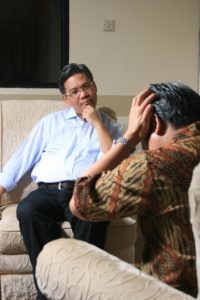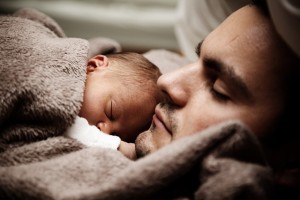
An individual can be addicted to any number of things such as sex, gambling, pornography, drugs, alcohol, and so forth. In this article, we will focus on how drugs and alcohol affect an individual and the family.
Globally, more than 29.5 million individuals suffer from a drug use problem and 76 million people suffer from alcohol use disorder (Kourgiantakis & Ashcroft, 2018). When a family member is caught in the throes of an addiction, it affects the entire family. Addiction is essentially a family disease (Phomann, 2018).
Even though the addict is suffering tremendously, it is the family who is impacted on a greater scale; this is because of the significant emotional and physical connection that a family member has in the addict’s life (Phomann, 2018). Usually, an addict will inflict tremendous damage within the family tree because of their addiction (Phomann, 2018).
 The family’s main responsibility is to form a habitat that provides a baseline sense of comfort and imaginative growth for children (Tsounis, 2013).
The family’s main responsibility is to form a habitat that provides a baseline sense of comfort and imaginative growth for children (Tsounis, 2013).
When these roles are reversed, values are removed, parents are unreliable and do not display stable behavior, causing children to grow up without consistent morals and guidelines on how to behave in the world (Tsounis, 2013).
That instability limits the required nourishment of the child which results in a variety of harmful effects on its psychosocial growth (Tsounis, 2013).
A firm understanding of the attributes of the family is important in order to comprehend between what is functional and dysfunctional (Tsounis, 2013). This helps to learn the effects on the mental and emotional processes of the family members (Tsounis, 2013). Boundaries exist within the family, just as in any other human system; these boundaries are relevant to the specific way that its members share knowledge and memories, both among themselves and with other people outside the family (Tsounis, 2013).
Boundaries help keep some components safe within the family unit and guard its autonomy, all the while permitting the unrestricted conveyance of data and communication out of the structure, expediting the connection with others (Tsounis, 2013). A family with completely accessible boundaries welcomes all members who want to grow into the system, as well as every new belief (Tsounis, 2013).
Although this reality expands the framework and the possibilities for mental, emotional and social growth, in its hypertrophic state, it leaves the members unsafe and carries the liability of bewilderment and a shortage of comprehension of the role (Tsounis, 2013). Alternatively, is the closed family system, which suffers from a deficiency of theories and blocks the supply of feeling and motivation (Tsounis, 2013). The closed family system is stiff, limits anything foreign and ignores every idea that is diverse (Tsounis, 2013).
Without meaning to, the addicted family member will cross many boundaries, burn bridges, and make the family question the meaning of love (Phomann, 2018). The destruction created by active addiction holds relevant, even after the individual enters into sobriety (Phomann, 2018).
Constructing positive family boundaries and navigating how to administer them adequately can help rescue a recovering addict and their family from slipping into a collapse, both privately and as a whole (Phomann, 2018). A freshly healing addict needs a lot of support and empathy; they reach out to their family in their times of need because, truly, families typically share a deep, loving bond that cannot be found anywhere else (Phomann, 2018).
In spite of the harm created within the family, consistent and true love triumphs over all (Phomann, 2018). Love gives families strength and hope that they and the healing addict can again reconstruct a positive bond and evolve together (Phomann, 2018).
The Effects of Addiction on the Family
 Addiction effects a family unit in a multitude of ways. The family is the main origin of attachment, sustenance, and communication for humans in modern society (Lander, Howsare, & Byrne, 2013).
Addiction effects a family unit in a multitude of ways. The family is the main origin of attachment, sustenance, and communication for humans in modern society (Lander, Howsare, & Byrne, 2013).
Subsequently, the effects of addiction on the family and individual family members causes a lot of scrutiny (Lander et al., 2013).
Everyone is impacted in different ways by the person using substances such as having stunted behavioral needs, flawed attachment, financial difficulties, legal issues, emotional problems, and sometimes abuse (Lander et al., 2013). Children are also at great risk of contracting a substance abuse disorder (Lander et al., 2013).
A large indication of substance abuse and addiction is that an individual removes themselves from their family and is no longer excited in activities that previously interested them, including family activities (Treehouse, 2018). This removal can be very hurtful, as quite quickly they lose their loved one, wife, or mother (Treehouse, 2018).
Also, addiction fuels emotional battles and negative ways of thinking (Treehouse, 2018). Family and friends may come across a lot of unhealthy mental patterns and feelings because of their loved one’s addiction; they may also blame themselves to the extent that they eat away at their own self-worth and love (Treehouse, 2018).
Addiction breeds apprehension, as addicted individuals usually manipulate and lie to their loved ones about their habits, often going to extremes to be reserved and crooked concerning their behaviors (Treehouse, 2018). An individual’s father may encounter feelings of anger or disappointment, as hopes crumble and the addiction takes hold over the family’s needs (Treehouse, 2018). It is not unusual for depression and anxiety to overpower family members, and the emotional expense is often high on children of addicts (Treehouse, 2018).
Then there is the issue of how addiction forms the caretaker role. With an addicted person, their body and brain undergo serious damage from the toxic strain of the constant drugs or alcohol (Treehouse, 2018). Many illnesses can come about because of this, and family can be caught in a position where they feel like they have to take care of the sick individual (Treehouse, 2018).
Caretaking can turn into a big strain, to the point where it can tax that person’s physical and emotional health to a breaking point (Treehouse, 2018). Usually, the caretaker will stop thinking about the needs of their own and only think about those of the addicted person, completely forgetting to take care of themselves (Treehouse, 2018). Self-love and self-care become things of the past in a family with an addicted loved one.
Subsequently is the issue of cultivating negative roles, which sort of spawn off from the caretaker role. An addiction can shift a family hierarchy and close relationships in many ways, and perhaps the most common is that of enabling (Treehouse, 2018).
An enabler is usually that of a spouse or partner, although it can be a child or a best friend (Treehouse, 2018). As an enabler, a person either consciously or unconsciously adds to the individual’s addiction with their behavior and/or actions (Treehouse, 2018).
 Often, this person is living in ignorance, choosing not to acknowledge the full scope of the addiction, as well as the enabling consequences of their actions, much of which they think, are actions of kindness or support (Treehouse, 2018).
Often, this person is living in ignorance, choosing not to acknowledge the full scope of the addiction, as well as the enabling consequences of their actions, much of which they think, are actions of kindness or support (Treehouse, 2018).
For example, a daughter who is enabling her alcoholic mother will repeatedly clean up after her when she is sick and make excuses for her as to why she cannot show up for work.
Then there is isolation, a byproduct of enabling. An example of isolation would be if the same daughter stopped going out with her friends in order to protect her mother. In the daughter’s mind, she is doing the “right” thing because her mother needs her “help” and her help only. However, the daughter is unable to see that she is losing her identity and sanity in the process of trying to protect her mother.
Financial destruction is another effect of addiction in a family unit. Addictions deplete large amounts of financial resources, usually in short periods of time (Treehouse, 2018). The more frequent and impulsive an individual’s addiction becomes, the more exhausted their wallet becomes to fund their substance of choice (Treehouse, 2018).
This leaves an addict with a few desperate options: (1) they can lose their job, (2) they can steal money, or (3) they can take money saved for other things like bills to fund their addiction (Treehouse, 2018). Doing any of these can create major financial stress in the family because the bills may not get paid, and therefore other members of the family are left to come up with the money to pay them; if that’s not an option then the family can literally lose their utilities, home, or car (Treehouse, 2018).
When someone cannot provide monetarily for their family, it places a heavy strain on everyone; similarly, when an addicted person steals money from family member, it makes it much more challenging for them to come up with the money to pay the bills and fuels a lot of negative feelings (Treehouse, 2018).
Abuse, another effect, is the nasty secret of addiction in many families (Treehouse, 2018). Because substances such as drugs and alcohol alter an individual’s brain chemistry, it changes the way they think and behave, what they will do on any given day, lowers their modesty, and causes them to be angry and violent (Treehouse, 2018).
Abuse can come in many forms: sexual, verbal, emotional, or physical and can be geared towards any member of the family (Treehouse, 2018). A couple can experience abuse so often that it can be known as intimate partner violence, or IPV; the American Society of Addiction Medicine calls IPV a serious public health concern, with reports finding that 40-60 percent of accounts of IPV happen with episodes of substance abuse (Treehouse, 2018).

Also, it has been reported that when the substance abuse was the highest, the rate of physical violence was 11 times higher with IPV abusers (Treehouse, 2018).
These destructive acts fuel the flame of addiction; spousal abuse is often a precursor to establishing an addiction and abused women are often coerced into taking drugs or alcohol by their partners (Treehouse, 2018).
Also, alcohol and drug abuse show up in instances of child abuse and neglect; those who are abused as children have a much higher chance of becoming an addict as an adult (Treehouse, 2018).
Next, addiction causes harmful influences to come into play within the family unit. Children are vulnerable and learn by example; during the early years, they are largely influenced by their surroundings (Treehouse, 2018).
Adding to the reality that there can be a genetic risk component because of the biological correlation between parent and child, a child may be more likely to test out drugs or alcohol at some time because they constantly perceive these actions (Treehouse, 2018). First of all, they may think that taking and abusing substances is normal; second, research indicates that a significant portion of children obtain their substances from a parent (Treehouse, 2018).
An estimated 1 in 5 children lives in a home where someone takes drugs or abuses alcohol (Smith & Wilson, 2017). The precise amount of children residing with adults with substance abuse disorders is not understood, however, in a study conducted by Smith & Wilson in 2017, an approximate 8.3 million children less than 18 years of age (around 12%) were living with a minimum of 1 parent who was reliant on substances between the years of 2002 and 2007.
Moving forward, there are significant health risks associated with addiction, and those can be spread to other members of the family. Certain drugs associated with substance abuse, such as heroin and meth, contain risks of carrying potentially fatal diseases like HIV and hepatitis C and B (Treehouse, 2018).
The main danger is to users who inject drugs because they commonly share infected needles, but the hazard goes further to other users who do not inject, too. This happens because addiction decreases their modesty while raising their inclination towards unhealthy behavior and forms a severe craving to seek out and use the drug, which can result in an individual swapping sex for their desired substance (Treehouse, 2018).
If an individual gets a disease, their partner can get it too if they partake in sexual activities after infection sets in; also, pregnant women who are addicts can endanger their unborn baby’s wellbeing because specific illnesses like AIDS can be shifted in utero (Treehouse, 2018). It is unfortunately normal for babies who are born to addicted mothers to experience withdrawal symptoms – these can be harmful and even fatal (Treehouse, 2018).
Finally, divorce is common among families intertwined with addiction. Addiction creates seriously high levels of stress and tension; a couple typically cannot navigate the harmful environment formed by the addiction which results in divorce (Treehouse, 2018).
 Addiction doesn’t always lead to divorce, but it does definitely raise the chances that a couple can get a divorce.
Addiction doesn’t always lead to divorce, but it does definitely raise the chances that a couple can get a divorce.
As well, divorce can lead to higher rates of relapse. Regmi & Lama (2018) report that “poor parent-adolescent communication, poor family management skills, lack of parental warmth, affective response, lack of parental involvement, the absence of parents due to divorce, or death all are found to be associated with risk of relapse.”
All in all, substance abuse disorder is an epidemic in the United States and around the world. Addiction has the ability to tear apart individuals and families chronically; thankfully, therapists can play a key part in helping the entire family to heal from the negative effects of addiction.
It is up to not only the individual to want to recover from addiction, but the family as well. An addicted loved one cannot recover from drugs and alcohol unless the family decides to, also. For example, a son who is addicted to heroine must choose to enter rehab and do the undoubtedly hard work involved to get his life back on track.
However, the entire family must also change the structure of their lives and do whatever it takes – working within healthy boundaries – to see that he gets better and that they get better. And this rebuilding of the self and the family unit is something that must continue, not only after the son recovers but for life.
References:
- Kourgiantakis, T., & Ashcroft, R. (2018) Family-focused practices in addictions: a scoping review protocol. BMJ Open. 8:e019433. doi: 10.1136/bmjopen-2017-019433. Retrieved from https://bmjopen.bmj.com/content/8/1/e019433
- Phomann. (2018). The Importance of Healthy Family Boundaries in Recovery. Retrieved from https://oceanbreezerecovery.org/blog/healthy-boundaries-important-families/#
- Tsounis, A. (2013). THE ROLE OF THE FAMILY IN THE INSTALLATION OF DRUG-ADDICTION: AN ATTEMPT TO EXPLORE THE RELATIONSHIP. ENCEPHALOS. 50, 109-113. Retrieved from http://www.encephalos.gr/pdf/50-4-04e.pdf
- Lander, L., Howsare, J., & Byrne, M. (July 27, 2013). The Impact of Substance Use Disorders on Families and Children: From Theory to Practice. Social work in public health, 28(3-4), 194-205. Retrieved from https://www.ncbi.nlm.nih.gov/pmc/articles/PMC3725219/
- www.treehouserehab.org. (November 2, 2018). How Does Addiction Affect Family and Friends? Retrieved from https://www.treehouserehab.org/addiction-affect-family-friends/
- Smith, V. C., & Wilson, C. R. (August 2016). Families Affected by Parental Substance Use. American Academy of Pediatrics Clinical Report. 138(2), Retrieved from http://pediatrics.aappublications.org/content/138/2/e20161575
- Matthew KJ, Regmi B & Lama LD. (2018). Role of Family in Addictive Disorders
International Journal of Psychosocial Rehabilitation. 22(1)65-75, Retrieved from http://www.psychosocial.com/IJPR_22/Role_Matthew.html
About the Presenter:
 Nikki DuBose is a model, author, and advocate. She is the Co-Founder of The Artists League for Change, a national nonprofit dedicated to preventing mental health issues and abuse through the creative arts, and is an Ambassador for the Shaw Mind Foundation. Her debut memoir, Washed Away: From Darkness to Light was released September 30, 2016, in the U.S. and will be released in French in 2018 with Editions du Rocher.
Nikki DuBose is a model, author, and advocate. She is the Co-Founder of The Artists League for Change, a national nonprofit dedicated to preventing mental health issues and abuse through the creative arts, and is an Ambassador for the Shaw Mind Foundation. Her debut memoir, Washed Away: From Darkness to Light was released September 30, 2016, in the U.S. and will be released in French in 2018 with Editions du Rocher.
Nikki has been featured on television shows and networks such as The Doctors, TD Jakes, CBS Los Angeles, and the Oprah Winfrey Network, and profiled in publications such as People, LA Times, and Vogue UK. She worked alongside Assemblymember Marc Levine on California Assembly Bill 2539, which addressed the need for workplace protections and health standards in the modeling industry. She gives talks regularly on her recovery at universities and treatment centers and writes extensively on mental health, political issues, and the modeling industry on the NY Daily News, The Huffington Post, PsychCentral, and more.
The opinions and views of our guest contributors are shared to provide a broad perspective of addictions. These are not necessarily the views of Addiction Hope, but an effort to offer a discussion of various issues by different concerned individuals.
We at Addiction Hope understand that addictions result from a combination of environmental and genetic factors. If you or a loved one are suffering from an addiction, please know that there is hope for you, and seek immediate professional help.
Published on November 29, 2018
Reviewed on July 27, 2018 by Jacquelyn Ekern, MS, LPC
Published on AddictionHope.com
